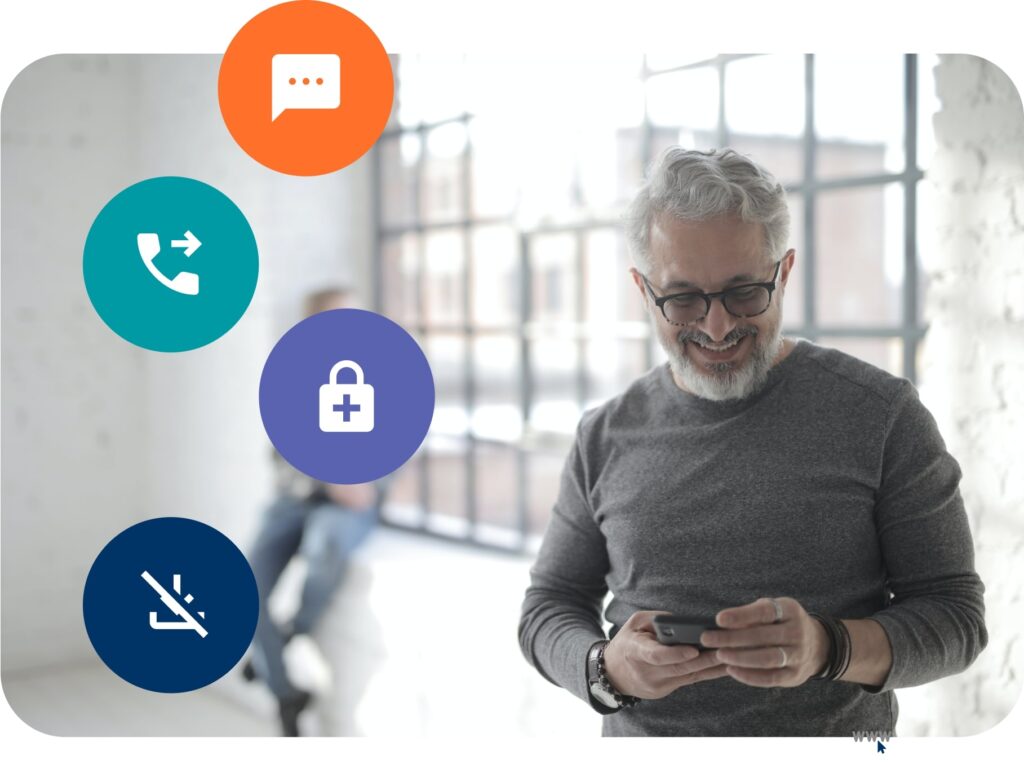
Why 2-Way Text Messaging Is a Must-Have Tool for Healthcare Providers
Imagine a healthcare experience where patients no longer have to wait on hold or struggle to schedule appointments. Instead, with a quick text, they can confirm a visit, reschedule, or ask a follow-up question—and get a prompt response. This isn’t just a convenience; it’s the future of patient communication.
With the growing demand for fast and effective communication, SMS for healthcare, especially 2-way text messaging, has become a critical tool for providers. It bridges the gap between patients and healthcare teams, enabling seamless interactions that save time, improve patient satisfaction, and enhance care outcomes.
Explores how 2-way text messaging revolutionizes healthcare communication, making it an essential tool for modern practices.
What Is 2-Way Text Messaging in Healthcare?
2-way text messaging allows healthcare providers and patients to send and receive messages in real-time. Unlike one-way SMS, which only sends notifications or reminders, 2-way messaging enables conversations. Patients can ask questions, respond to reminders, or reschedule appointments all through a simple text.
How 2-Way Messaging Works:
- Healthcare Provider Sends a Message: An appointment reminder or follow-up care instruction.
- Patient Responds: Patients can confirm the appointment, ask questions, or provide updates on their health.
- Secure and Compliant Platform: All communication is secure and complies with regulations like HIPAA.
This makes 2-way messaging a fast, efficient, and user-friendly way to connect patients and providers.
Why Is 2-way Text Messaging Important for Healthcare Providers?
1. Better Communication with Patients
Patients want to feel heard and supported. 2-way messaging makes it easy for them to reach out without needing to call or visit the office.
- Convenience: Patients can send a quick text rather than waiting on hold.
- Faster Responses: Providers can respond to questions or concerns in real time.
- Improved Patient Satisfaction: Simple communication makes patients feel valued and cared for.
2. Reduces Missed Appointments
Missed appointments are costly for both providers and patients. 2-way messaging helps reduce no-shows by keeping patients informed and engaged.
- Automated Reminders: Patients receive reminders about upcoming appointments.
- Easy Rescheduling: Patients can reply to reschedule if needed, filling canceled slots more efficiently.
- Reduced Administrative Burden: Staff spend less time following up on no-shows.
Example: A dental practice reduced missed appointments by 30% using automated SMS reminders with 2-way messaging capabilities.
3. Saves Time for Staff
Phone calls can take up a lot of staff time. With 2-way text messaging, simple questions can be answered quickly without tying up phone lines.
- Fewer Calls: Patients can text instead of calling for non-urgent issues.
- Streamlined Follow-Ups: Providers can send follow-up messages without calling each patient.
- Efficient Task Management: Automated replies handle basic tasks like appointment confirmations.
4. Supports Telehealth and Remote Care
With telehealth on the rise, 2-way messaging provides a simple way to manage remote patient care.
- Virtual Check-Ins: Providers can ask patients about symptoms or recovery progress.
- Pre-Telehealth Instructions: Patients can receive text links or instructions for telehealth appointments.
- Post-Treatment Monitoring: Patients can update their provider on their condition after a procedure or consultation.
Example: A family clinic used 2-way messaging to monitor COVID-19 symptoms in remote patients, ensuring timely follow-ups.
5. Affordable and Scalable Communication
Text messaging is cost-effective, making it accessible for practices of all sizes.
- Low Operating Costs: Text messages are cheaper than making phone calls or sending paper reminders.
- Scalable: Two-way messaging systems can handle increasing patient loads, whether you’re a small clinic or a large hospital.
- Integration with Existing Systems: Many platforms integrate with EHRs, making implementation easy.
How Healthcare Providers Use 2-Way Messaging
1. Appointment Management
- Send reminders to reduce no-shows.
- Allow patients to reschedule or cancel appointments via text.
- Notify patients of last-minute availability for earlier slots.
2. Medication Reminders
- Send reminders for medication refills or to take prescribed medicines.
- Answer questions about side effects or dosage adjustments.
3. Post-Treatment Care
- Check in with patients after procedures to monitor recovery.
- Provide follow-up instructions or next steps in care.
4. Patient Feedback
- Request reviews or surveys to gather feedback.
- Respond to concerns or suggestions to improve patient satisfaction.
5. Health Education
- Share tips or resources related to a patient’s condition.
- Provide pre-visit instructions to ensure patients are prepared.
Benefits of 2-Way Text Messaging for Healthcare
1. Increased Patient Engagement
Engaged patients are more likely to follow care plans and attend appointments. 2-way messaging makes it easy for patients to stay informed and involved in their healthcare.
2. Better Patient Retention
Patients are more likely to stick with a provider who communicates effectively and values their time.
3. Faster Problem Resolution
Quick responses to patient questions or concerns improve satisfaction and build trust.
4. Improved Operational Efficiency
By reducing phone calls and streamlining processes, 2-way messaging saves time and resources for staff.
Best Practices for 2-Way Messaging in Healthcare
1. Use a HIPAA-Compliant Platform
Ensure all messages are secure and protect patient privacy.
2. Keep Messages Simple and Clear
Avoid medical jargon and ensure patients can easily understand your instructions.
3. Automate Routine Messages
Use automation for reminders or common queries, but ensure staff are available for more complex concerns.
4. Train Your Team
Ensure your staff knows how to use the system effectively and promptly respond to patient messages.
5. Promote the Service
Inform patients about the benefits of 2-way messaging and encourage them to use it for non-urgent communication.
Real-World Success Stories
Case Study 1: Multi-Specialty Clinic
A clinic introduced 2-way text messaging to manage appointment scheduling and follow-ups. Results:
- 40% reduction in no-show rates.
- Faster patient queries resolved, improving satisfaction scores.
Case Study 2: Physical Therapy Practice
A physical therapy clinic used 2-way messaging to monitor patient progress between sessions. Outcomes:
- Increased patient compliance with home exercises.
- Improved retention rates as patients appreciated the ongoing support.
Conclusion
2-way text messaging is a must-have tool for healthcare providers looking to improve communication, reduce missed appointments, and save time. Real-time, secure communication enhances the patient experience while making operations more efficient.
We provide HIPAA-compliant SMS for healthcare solutions designed to streamline your communication and improve patient engagement. Ready to implement 2-way text messaging in your practice? Contact Simple Interact to create a better experience for your patients and staff!






